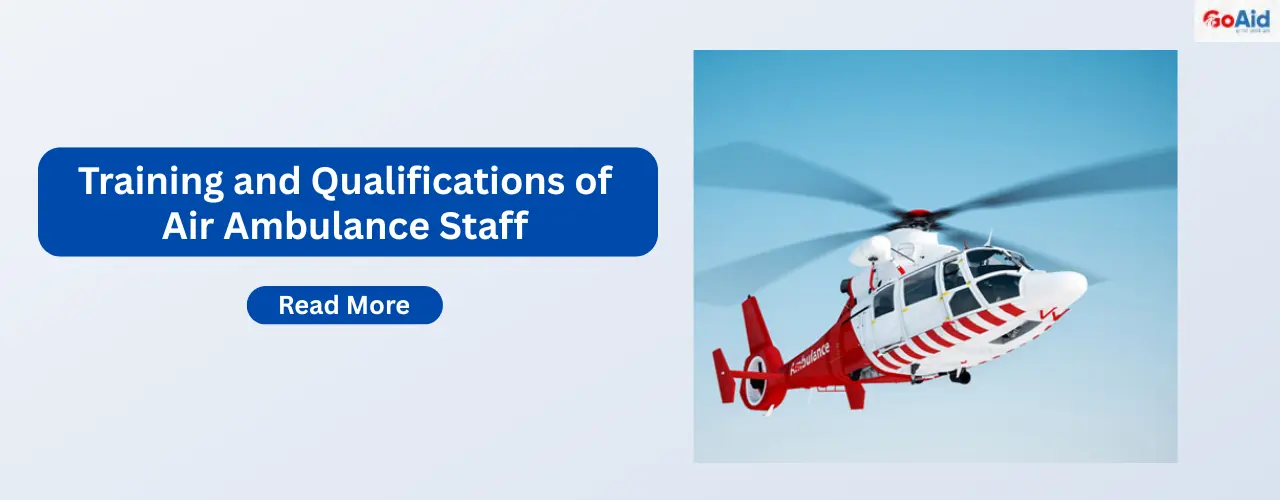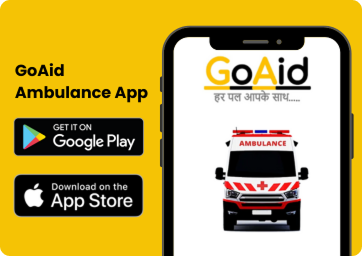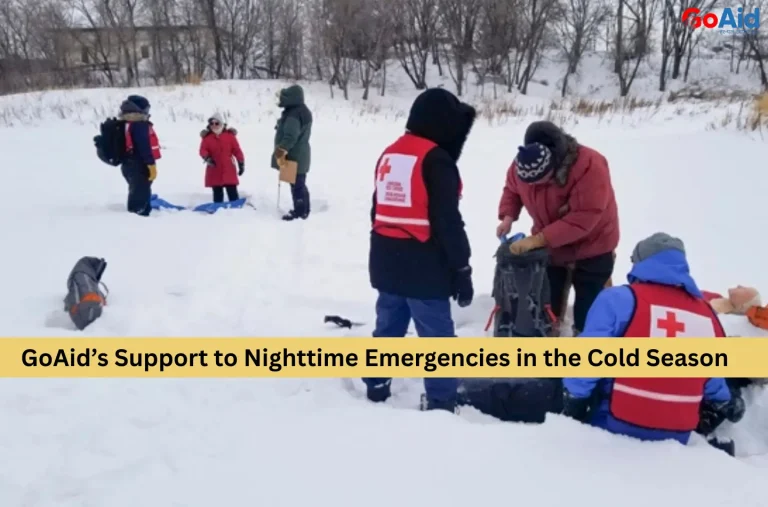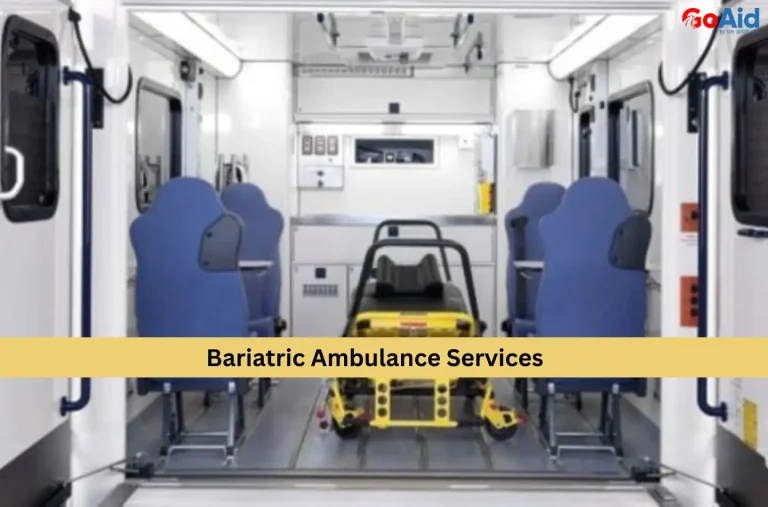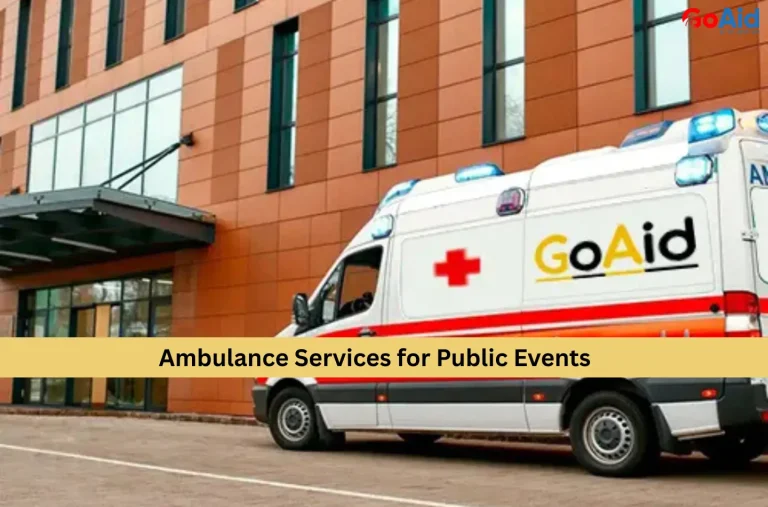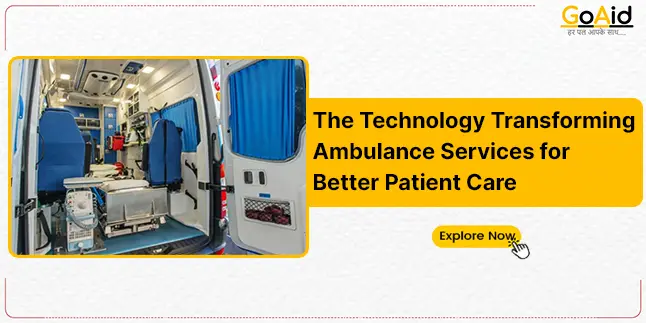Air Ambulance Services have highly trained professionals to provide immediate care during a medical emergency. The training and qualifications of air ambulance staff are very rigorous. From paramedics to pilots, every team member gets specialized education and training.┬Ā
In this blog, we have mentioned every single detail about the training and qualification of air ambulance staff. Are you excited to know about it? If your answer is yes. Then let’s start reading this blog
About the Air Ambulance Staff
Air Ambulance Staff are highly trained professionals dedicated to providing lifesaving care during air transfers. Each member undergoes extensive Air Ambulance Staff Training to manage emergencies at high altitudes. Their qualifications vary but typically include advanced degrees, certifications, and Emergency Medical Training for Air Ambulance Teams.
The Qualifications of the Air Ambulance Crew ensure that they can respond quickly and effectively in critical situations. Flight paramedics, nurses, and respiratory therapists all receive specialized Air Ambulance Paramedic Training to handle complex medical needs. In addition to medical personnel, pilots must meet strict Pilot Requirements for Air Ambulances to ensure safe transportation. Together, they form a skilled, coordinated team essential to delivering excellent Air Ambulance Services.
Job and roles of Air Ambulance Staff
The Air Ambulance Staff plays a crucial role in ensuring the safe and efficient transport of critically ill or injured patients. Their specific duties depend on their training and qualifications:
- Pilot ŌĆō Operates the air ambulance safely, meeting all Pilot Requirements for Air Ambulances.
- Flight Paramedic ŌĆō Provides emergency care and medical support, following Air Ambulance Paramedic Training.
- Flight Nurse ŌĆō Manages patient care, monitors medical conditions, and administers treatments.
- Respiratory Therapist ŌĆō Specializes in managing respiratory issues during flight, ensuring patients’ airways remain stable.
- Medical Director ŌĆō Oversees medical protocols and ensures the Air Ambulance Staff Training meets industry standards.
How to Join the Air Ambulance Staff
Air Ambulance Service requires specialized qualifications and training. Candidates must meet strict standards to ensure they can handle emergencies during flights. Steps include:
- Complete Emergency Medical Training for Air Ambulance Teams to build critical care skills.
- Fulfill Pilot Requirements for Air Ambulances if aiming to become an air ambulance pilot.
- Pursue Air Ambulance Paramedic Training to work as a flight paramedic.
- Earn Certifications Reflecting Air Ambulance Staff Qualifications, such as ACLS, PALS, and trauma care credentials.
- Gain Experience in Emergency Services, including ground ambulance or ER settings.
- Seek Training Opportunities for the Air Ambulance Crew through accredited programs.
Basics of Air Ambulance Staff Training
Air Ambulance Staff Training is essential for ensuring safe and effective emergency care during air transport. Specialized programs develop both medical and aviation skills. Key basics include:
- Emergency Medical Training for Air Ambulance Teams covering trauma, cardiac care, and critical care techniques.
- Air Ambulance Paramedic Training focuses on advanced life support and patient stabilization.
- Training Opportunities for Air Ambulance Crew, such as simulation exercises and flight physiology education.
- Pilot Requirements for Air Ambulance, including aviation safety, navigation, and emergency response.
- Skills Required for Air Ambulance Staff like teamwork, quick decision-making, and stress management under pressure.
Various types of training for Air Ambulance Staff
Air Ambulance Staff must undergo different types of training to prepare for medical emergencies and high-stress flight situations. Training focuses on physical, mental, and technical skills. Key types include:
Physical Training
- Air Ambulance Staff Training emphasizes physical endurance to handle patient transfers and emergencies.
- Staff undergo Emergency Medical Training for Air Ambulance Teams that includes CPR, patient lifting, and evacuation drills.
- Air Ambulance Paramedic Training often involves fitness assessments to ensure readiness for demanding missions.
Mental Training
- Training Opportunities for Air Ambulance Crew include stress management, emotional resilience, and teamwork exercises.
- Mental preparedness is vital to meet the Skills Required for Air Ambulance Staff in critical and unpredictable situations.
- Qualifications of Air Ambulance Crew also demand decision-making training under high-pressure flight environments.
The Qualifications of Air Ambulance Staff
Air Ambulance Staff require specific qualifications to perform their roles effectively. These qualifications ensure they are well-prepared for both medical and aviation challenges. Key qualifications include:
Educational Qualification
- Air Ambulance Staff Qualifications include formal degrees in nursing, paramedicine, or medical specialties.
- Air Ambulance Paramedic Training involves obtaining certifications like ACLS, PALS, and trauma care.
- Qualifications of Air Ambulance Crew typically require specialized education in emergency medicine or aviation medicine.
Physical Qualification
- Air Ambulance Staff Training includes physical fitness tests to ensure crew members can handle strenuous tasks.
- Physical Training ensures staff can safely transport patients, lift equipment, and perform CPR during flights.
- Staff must meet Physical Qualifications that assess endurance, agility, and strength.
Air Time Experience
- Pilot Requirements for Air Ambulances demand commercial pilot experience with a specific number of flying hours.
- Air Ambulance Crew Qualifications require staff to have substantial air time experience, ensuring they can adapt to in-flight medical emergencies.
- Air Ambulance Staff often need a minimum number of hours spent in-flight to qualify for specific roles.
Key Challenges during the Training Programme
The Training for Air Ambulance Staff is highly demanding, with various challenges that test both physical and mental limits. These challenges ensure readiness for emergencies in-flight. Key challenges include:
- Air Ambulance Staff Training involves mastering both medical procedures and aviation safety protocols, which can be overwhelming.
- The need for Emergency Medical Training for Air Ambulance Teams to handle diverse medical emergencies under high pressure.
- Air Ambulance Paramedic Training requires quick decision-making skills in confined spaces, which can be physically and mentally taxing.
- Physical Qualification tests can be tough, requiring high endurance for physically demanding tasks.
- Pilot Requirements for Air Ambulances include mastering navigation and safety while coordinating with medical staff in-flight.
- Balancing the intense Training Opportunities for Air Ambulance Crew with ongoing work commitments and maintaining peak mental health.
Soft Skills Necessary for Air Ambulance Staff
In addition to technical qualifications, Air Ambulance Staff must possess essential soft skills to perform effectively in high-pressure situations. These skills ensure smooth coordination and patient care. Key soft skills include:
- Skills required for Air Ambulance Staff include strong communication to relay patient information clearly between the team and the hospital.
- Air Ambulance Paramedic Training involves cultivating emotional resilience to manage stress and trauma.
- Training Opportunities for Air Ambulance Crew focus on teamwork, ensuring crew members work seamlessly together.
- Emergency Medical Training for Air Ambulance Teams enhances decision-making skills, especially during high-stress emergencies.
- Qualifications of Air Ambulance Crew include problem-solving abilities to adapt to dynamic flight conditions and patient needs.
Qualifications you need to join GoAid’s Ambulance Staff
To become part of GoAidŌĆÖs renowned Air Ambulance Service, candidates must meet specific qualifications and training requirements. The following qualifications are crucial:
- Air Ambulance Staff Qualifications typically require a medical background, such as a paramedic, nurse, or physician’s assistant degree.
- Air Ambulance Paramedic Training is essential, including certifications like ACLS, PALS, and trauma care.
- Pilot Requirements for Air Ambulances demand a commercial pilot’s license with additional aviation medical training.
- Emergency Medical Training for Air Ambulance Teams ensures readiness for high-pressure, life-saving situations.
- Proven Skills Required for Air Ambulance Staff, including quick thinking, communication, and teamwork, are essential.
- Training Opportunities for Air Ambulance Crew are available to ensure continuous professional development and qualifications are up to date.
Book Ambulance: GoAid Ambulance Service
Conclusion to the Training and Qualifications of Air Ambulance Staff
The training and qualifications of Air Ambulance Staff are crucial for providing high-quality care during emergencies. From Air Ambulance Staff Training to Air Ambulance Paramedic Training, each team member must be equipped with specialized skills and knowledge.
Pilot Requirements for Air Ambulances ensure safe operations, while Emergency Medical Training for Air Ambulance Teams prepares staff to handle complex medical situations in-flight. Continuous development through Training Opportunities for the Air Ambulance Crew keeps the team sharp. Ultimately, the Qualifications of the Air Ambulance Crew ensure that patients receive the best care during transport, making every mission a success.
FAQs related to the Training and Qualifications of Air Ambulance Staff
Answer: To join the Air Ambulance Staff, candidates need a medical background (paramedic, nurse, or doctor), Air Ambulance Paramedic Training, and relevant certifications like ACLS and PALS.
Answer: Air Ambulance Staff Training includes emergency medical skills, aviation safety, and specific Emergency Medical Training for Air Ambulance Teams to prepare for high-pressure flight scenarios.
Answer: Pilot Requirements for Air Ambulances include a commercial pilotŌĆÖs license, additional medical flight certifications, and experience in flying under emergency conditions for safe operations.
Answer: Air Ambulance Paramedic Training focuses on patient care in-flight, handling emergencies under pressure, and operating in confined spaces, unlike standard paramedic training focused on ground emergencies.
Answer: Skills required for Air Ambulance Staff include strong communication, teamwork, stress management, and quick decision-making to effectively manage emergencies in-flight and on the ground.

